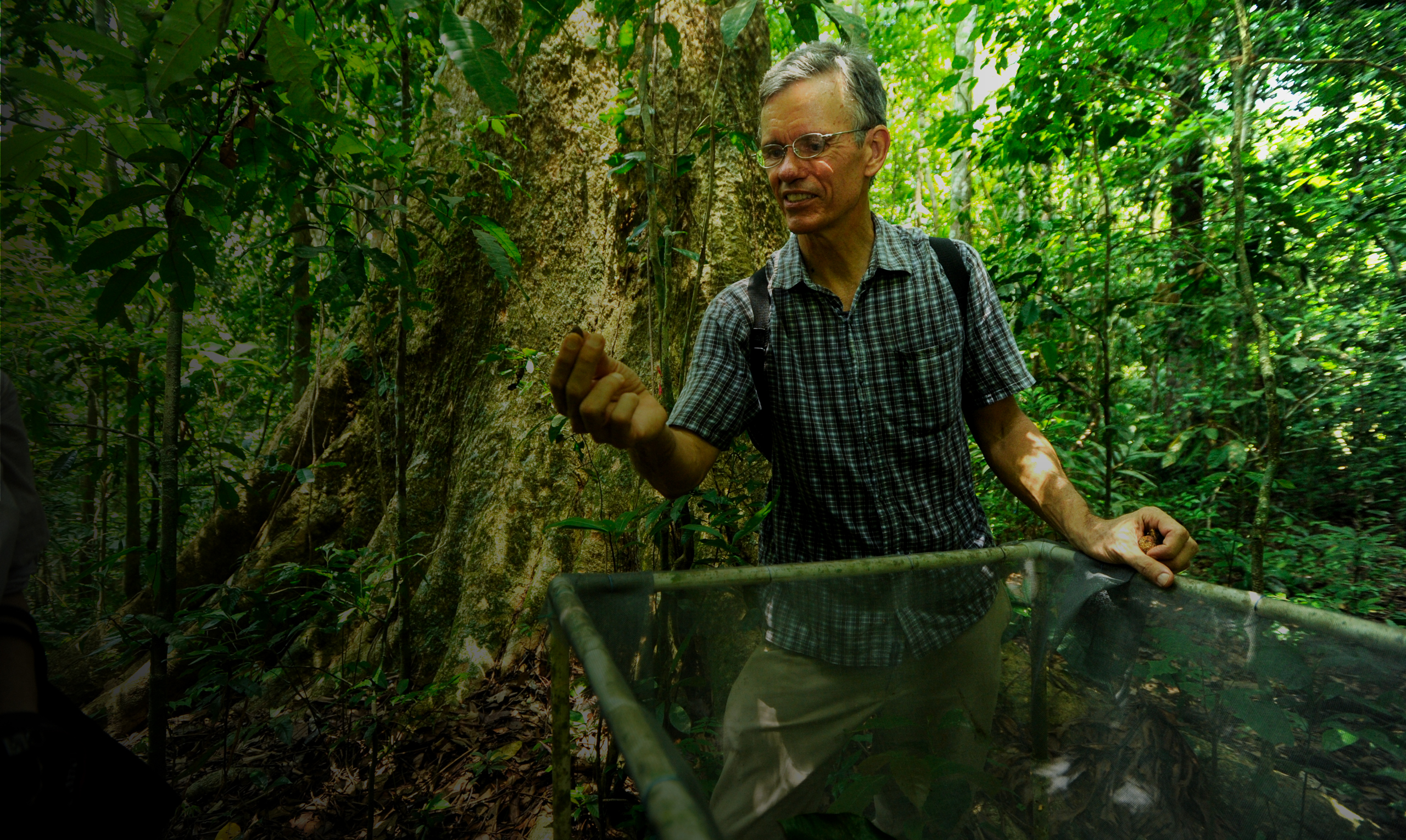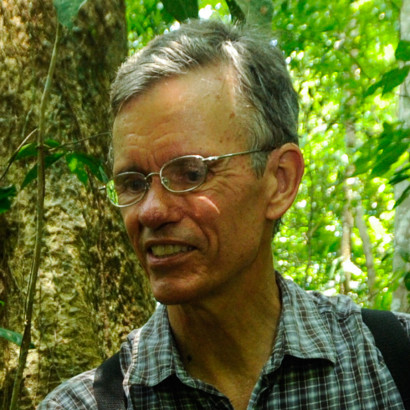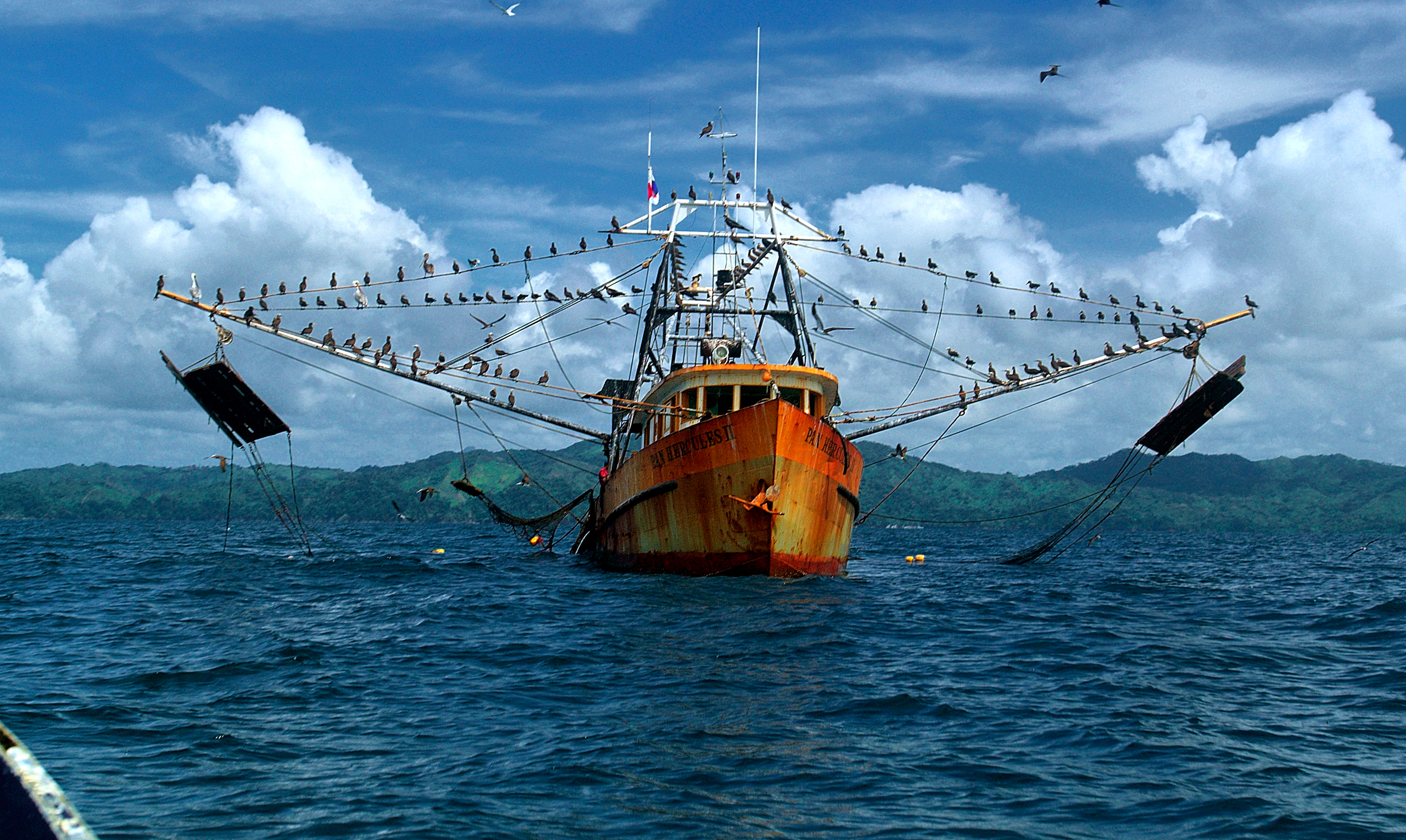A thousand tree species, a thousand vertebrate species, and an uncounted variety of smaller organisms live together in many tropical forests. The challenge posed for ecological theory is irresistible.
B.A., Princeton University, 1974.
Ph.D., University of California at Los Angeles, 1980.
Wright, SJ and O Calderón. In press. Solar irradiance as the proximate cue for flowering in a tropical moist forest. Biotropica
Usinowicz, J, YY Chen, JS Clark, C Fletcher, NC Garwood, Z Hao, J Johnstone, Y Lin, MR Metz, T Masaki, T Nakashizuka, IF Sun, R Valencia, Y Wang, JK Zimmerman, AR Ives, SJ Wright. 2017. Temporal niches and the latitudinal gradient in forest diversity. Nature doi:10.1038/nature24038
Chen, YY, A Satake, IF Sun, Y Kosugi, M Tani, S Numata, SP Hubbell, C Fletcher, Nur Supardi Md. Noor, SJ Wright. 2017. Species-specific flowering cues among general flowering Shorea species at the Pasoh Research Forest, Malaysia. Journal of Ecology doi: 10.1111/1365-2745.12836
Katabuchi, M, SJ Wright, N Swenson, K Feeley, R Condit, SP Hubbell and SJ Davies. 2017. Contrasting outcomes of species- and community-level analyses of the temporal consistency of functional composition. Ecology 98: 2273-2280.
Wright, SJ, O Calderón, A Hernandéz, M Detto, PA Jansen. 2016. Interspecific associations in seed arrival and seedling recruitment in a Neotropical forest. Ecology 97: 2780-2790.
Wright, SJ, IF Sun, M Pickering, CD Fletcher, YY Chen. 2015. Long-term changes in liana loads and tree dynamics in a Malaysian forest. Ecology 96: 2748-2757.
Wright, SJ, JB Yavitt, N Wurzburger, BL Turner, EVJ Tanner, EJ Sayer, LS Santiago, M Kaspari, LO Hedin, KE Harms, MN Garcia and MD Corre. 2011. Potassium, phosphorus and nitrogen limit forest plants growing on a relatively fertile soil in the lowland tropics. Ecology 92: 1616–1625.
S. Joseph
 navy-blue
Stanley Heckadon-Moreno
navy-blue
Stanley Heckadon-Moreno










